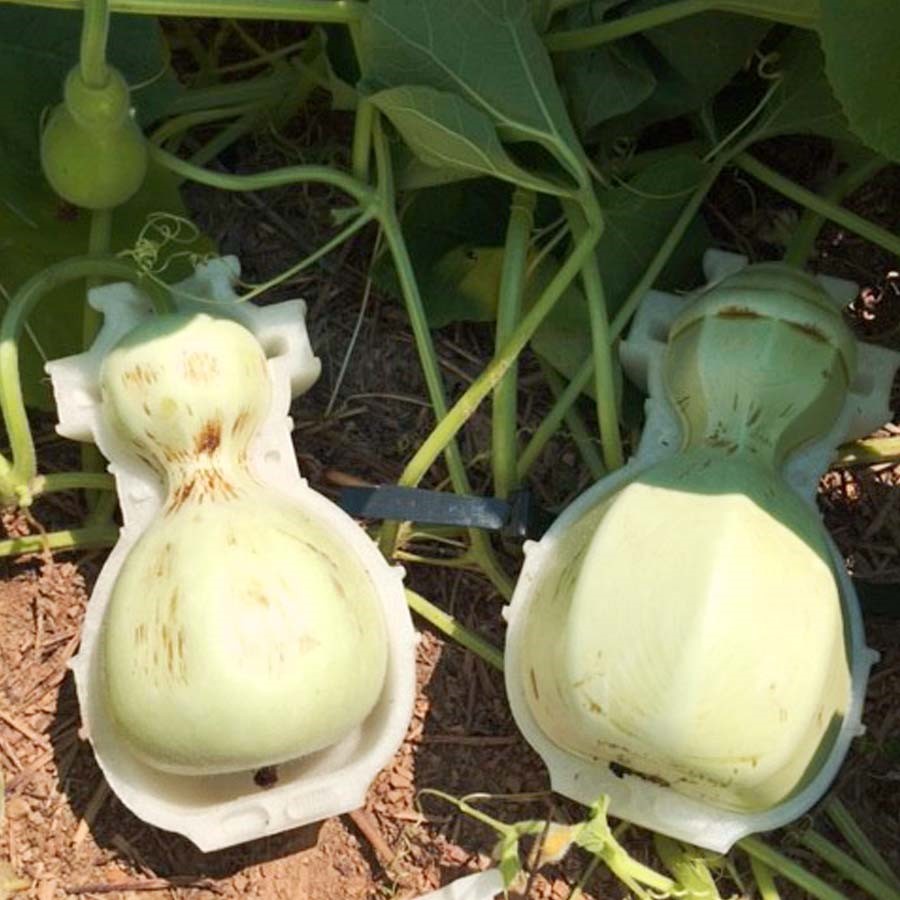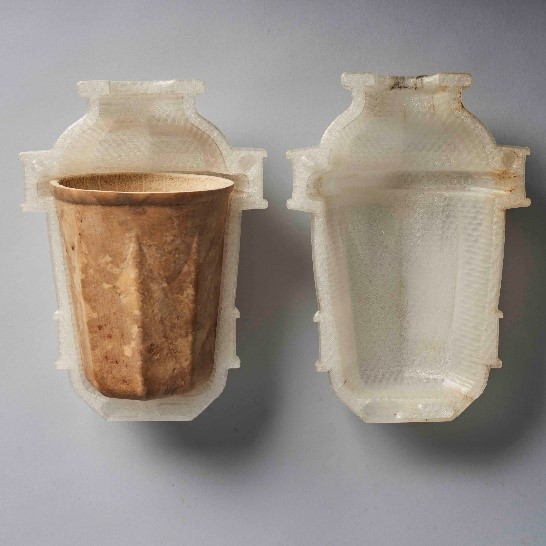THE SUSTAINABLE PACKAGING INITIATIVES by JUN AIZAKI
by Arifpermana Ratum

Fig. 1 GOURD cup, CRÈME design firm solution as Starbuck’s paper cup alternatives
source: http://cremedesign.com/product/gourds
In 2006, Starbucks reported using 2.6 billion cups in their stores. While making each paper-based cup produces 0.24 lbs of CO2 emissions, it is estimated that only 0.25% will be recycled after disposal. We must immediately change our perspective in business which still uses the cradle-to-grave perspective (after it is made, used, then discarded). What if besides being a material resource, nature can also take part in the process? Throughout the exploration, Crème identified pumpkin as a fast-growing plant that can produce strong fruit every season, develop a strong outer skin, and flesh fibers on the inside. Once dried, pumpkin has traditionally been used by our ancestors as a cup-like container. Crème explored this centuries-old craft, using molds to grow pumpkins into functional forms, such as cups, to create products that are sustainable, renewable and can be composted at the end of their useful life without becoming waste.
GOURDS is a product developed by a design bureau located in New York owned by Jun Aizaki. This product is the result of the development of a local genius that uses a pumpkin-like plant (cucurbittae) which is grown in a mold made by printing in three dimensions and then dried as shown in Figure 2
Gambar 2 Proses pencetakan tanaman labu hingga akhirnya bisa dipakai sebagai produk yang fungsional dengan bentuk kendi
Sumber: http://cremedesign.com/product/gourds
The picture above is a photo of GOURD products, a glass made from pumpkin plants. GOURD is a product developed using the cradle-to-cradle principle. This product is designed as a substitute for paper cups for people who consume coffee or hot tea.
The design principles that used in this project is by looking on the way people of older ages and local cultures interacts with nature. In using the natural resources, limiting the consumption or even changing the way they treat natural resources to blend with nature. The problem in consuming paper cup haven’t been solved on an industrial level. The paper cup industry still flourishing as their customer keep looking for their products because of no easy alternative in serving a hot drink to their customers. To realize the idea of stopping the production of paper cup, the industry needs to be invited to collaborate.




Comments :